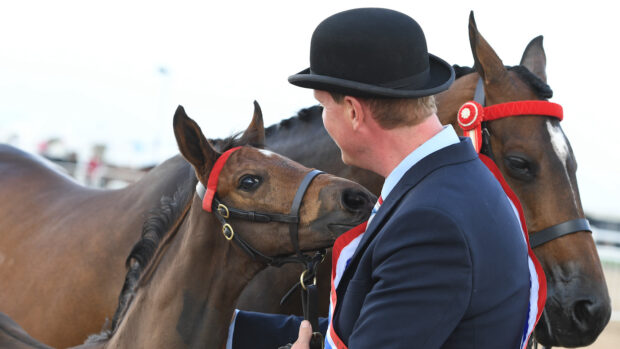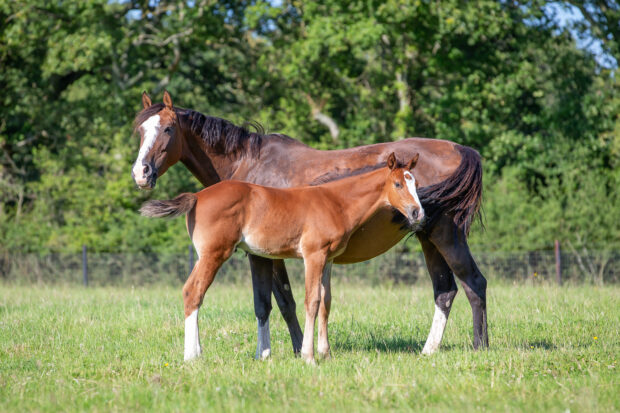More articles on breeding horses
The latest breeding news
If a broodmare is to have a foal each year she must be back in-foal within around 25 days after giving birth. Horses are unusual among domestic animals because mares become fertile within two weeks of giving birth, a period commonly known as foal heat. However, whether or not to use this first oestrus (season) remains questionable.
In almost 100% of mares, the foal heat is characterised by normal development of eggs and ovulation within 20 days of birth. Most mares return to heat five to eight days after delivery of the foal. The average interval from birth to first post-partum ovulation is 10 days.
Occasionally, a mare may not appear to have a foal heat, especially if she gives birth early in the year. Also, maternal instincts may mean that some mares are reluctant to show signs of oestrus when they have a foal at foot.
To cover or not to cover?
The condition of the uterus is extremely important when deciding whether to cover a mare on foal heat.
In most cases, the diameter of the uterus reduces rapidly after foaling, which is known as uterine involution. Any delay in the uterus returning to its normal size invariably follows a difficult birth, abortion or retained placenta and can causes reproduction complications.
Your vet will assess a reduction in the uterus, and the amount of fluid retained, by a rectal examination and ultrasound. The greater the accumulation of uterine fluid at foal heat, the lower the chance of a mare becoming pregnant.
If a large number of pus cells (neutrophils) are present on a smear taken from the lining of the uterus after foaling then the mare should not be covered at foal heat as this may indicate infection. It is normal for bacteria to enter the uterus after foaling, but the number can be reduced by careful attention to hygiene.
Any mare who had a difficult birth or retained placenta should be evaluated carefully, but it is probably better not to cover her, while a mare with a severe trauma to the birth canal should not be considered at all.
Ensure your vet checks the mare around seven days after foaling, even if you do not intend to cover her in the foal heat. This enables problems to be detected and any necessary treatment started.
Pros and cons
The aim of many breeders is to produce healthy foals as early as possible from mares bred the previous year. Against the obvious time-saving advantage of breeding at the foal-heat, there are two disadvantages.
Pregnancy rate: There is a lower pregnancy rate for mares covered at the first oestrus after the birth. This may be due to incomplete uterine involution, fluid in the uterus, infection or inflammation. Whether breeding a mare on foal heat can have a detrimental effect on the pregnancy rate in subsequent heat periods is a subject of much debate.
Subsequent foaling rate: Some studies report an increase in early embryo mortality in mares conceiving at the foal heat. Others find that management and year-to-year variation account for any differences and that there has been no real increase in pregnancy loss. Also, ultrasound scanning means that the breeder can find out more quickly if a mare has lost a foal early and have her covered again.
There are various ways to improve pregnancy rates from breeding at the foal heat.
- Flushing the uterus with a saline solution can be beneficial in mares which have had a retained placenta or uterine inflammation
- Drugs (oxytocin and prostaglandin) have been used in an attempt to encourage the uterus to contract and, in turn, help it to reduce in size
- Exercise is said to help uterine fluid to discharge and the uterus to reduce
Alternatively, instead of covering the mare at the foal heat, the vet can use prostaglandin to reduce the interval between the foal heat and the second ovulation after foaling. However, in many cases, only one week will be saved over breeding at the natural second heat.
Breeding mares at foal heat requires a high degree of management skill and veterinary expertise, but with careful management, mares with a young foal at foot can deliver a healthy, normal foal within a year of last giving birth.
This feature was originally published in Horse & Hound
Looking for more articles on breeding horses?
Get the latest breeding news now



